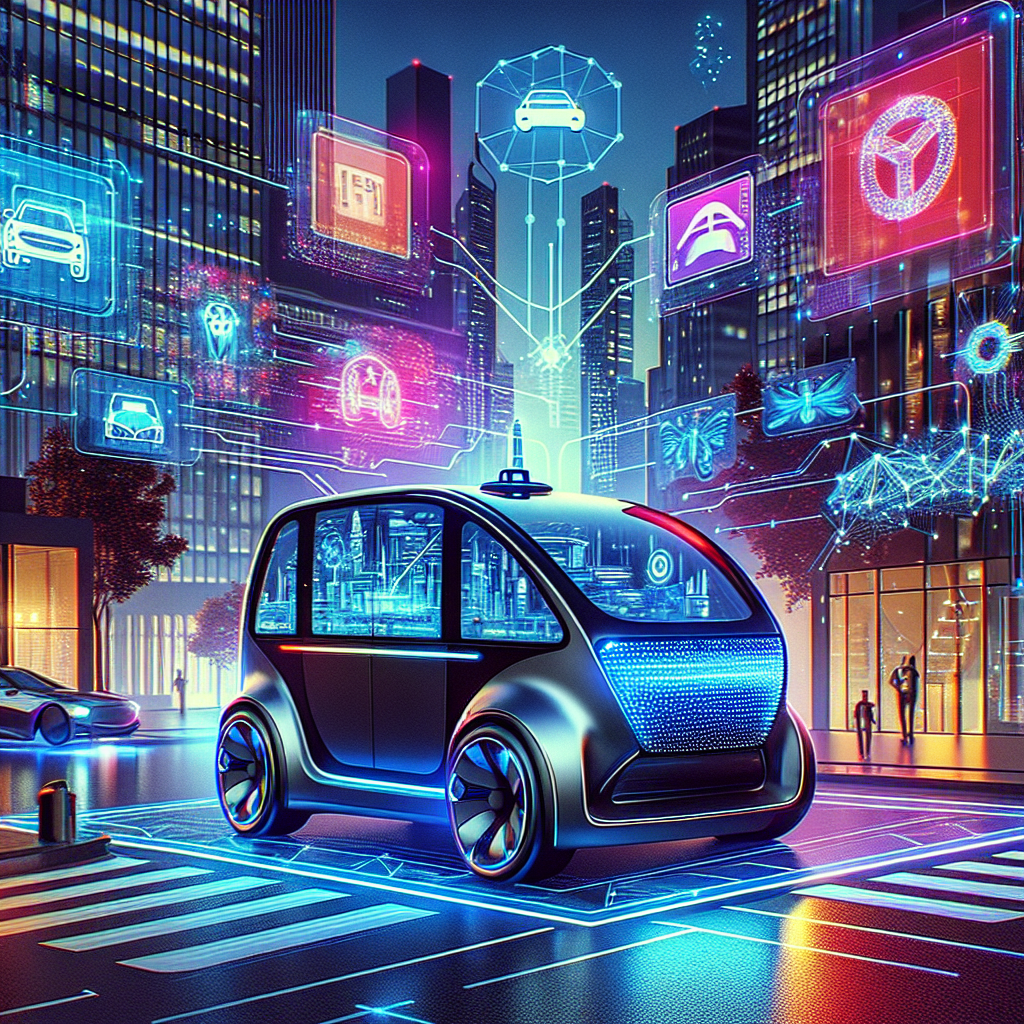The use of artificial intelligence (AI) in autonomous ride-sharing services is revolutionizing the transportation industry. These services offer a convenient and efficient way for people to get around, while also reducing traffic congestion and emissions. In this article, we will explore the various ways in which AI is being used in autonomous ride-sharing services, as well as the benefits and challenges associated with this technology.
One of the key ways in which AI is used in autonomous ride-sharing services is through the development of self-driving vehicles. These vehicles are equipped with sensors, cameras, and other technologies that allow them to navigate roads, detect obstacles, and make decisions on their own. AI algorithms are used to process the data collected by these sensors and make real-time decisions about how to drive safely and efficiently.
Another way in which AI is used in autonomous ride-sharing services is through the development of route optimization algorithms. These algorithms analyze traffic patterns, weather conditions, and other factors to determine the most efficient route for a given trip. By optimizing routes, autonomous ride-sharing services can reduce travel times, save fuel, and improve the overall customer experience.
AI is also used in autonomous ride-sharing services to improve safety and security. For example, AI algorithms can analyze data from sensors to detect potential hazards on the road, such as pedestrians or other vehicles. In the event of an emergency, these algorithms can take over control of the vehicle and steer it to safety. Additionally, AI can be used to verify the identity of passengers and ensure that only authorized individuals are allowed to ride in the vehicle.
Overall, the use of AI in autonomous ride-sharing services offers numerous benefits, including:
1. Increased efficiency: AI algorithms can optimize routes, reduce travel times, and save fuel, leading to a more efficient transportation system.
2. Improved safety: AI can help prevent accidents by detecting hazards on the road and taking evasive action when necessary.
3. Reduced emissions: By optimizing routes and driving more efficiently, autonomous ride-sharing services can help reduce emissions and combat climate change.
4. Enhanced customer experience: AI algorithms can personalize the ride experience for each passenger, making it more comfortable and convenient.
However, there are also challenges associated with the use of AI in autonomous ride-sharing services. These include:
1. Technical limitations: AI algorithms are not perfect and may still make mistakes when driving autonomously. This can lead to accidents and other safety issues.
2. Regulatory hurdles: Autonomous vehicles are subject to strict regulations and may face legal challenges when operating on public roads.
3. Ethical concerns: AI algorithms may need to make difficult decisions in emergency situations, such as choosing between protecting the passenger or avoiding a collision with another vehicle. These ethical dilemmas can be difficult to resolve.
4. Privacy issues: AI algorithms collect a large amount of data about passengers, including their location, preferences, and behavior. This data must be handled carefully to protect passenger privacy.
Despite these challenges, the use of AI in autonomous ride-sharing services is likely to continue to grow in the coming years. As technology advances and regulations evolve, autonomous vehicles are expected to become more common on the roads, offering a safe, efficient, and sustainable transportation option for people around the world.
FAQs:
1. What is AI in autonomous ride-sharing services?
AI in autonomous ride-sharing services refers to the use of artificial intelligence algorithms to drive self-driving vehicles, optimize routes, and improve safety and security in ride-sharing services.
2. How does AI improve efficiency in autonomous ride-sharing services?
AI algorithms can analyze data from sensors and other sources to optimize routes, reduce travel times, and save fuel, leading to a more efficient transportation system.
3. Are autonomous ride-sharing services safe?
Autonomous ride-sharing services are designed to be safe, with AI algorithms helping to prevent accidents and ensure the safety of passengers and other road users.
4. What are the challenges of using AI in autonomous ride-sharing services?
Challenges include technical limitations, regulatory hurdles, ethical concerns, and privacy issues. These challenges must be addressed to ensure the safe and successful implementation of autonomous ride-sharing services.
In conclusion, the use of AI in autonomous ride-sharing services is transforming the transportation industry, offering a range of benefits including increased efficiency, improved safety, reduced emissions, and enhanced customer experience. While there are challenges to overcome, the potential of AI in autonomous ride-sharing services is vast, and this technology is likely to play an increasingly important role in the future of transportation.

